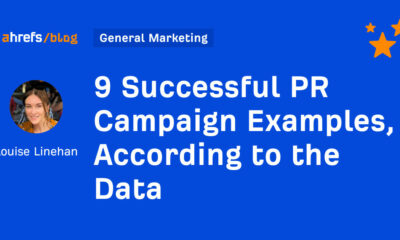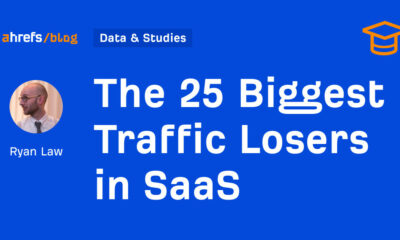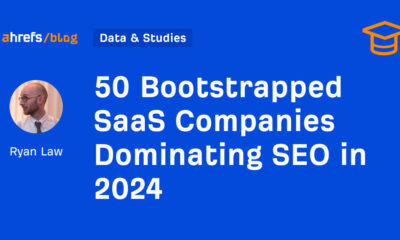SEO
Important KPIs To Measure For An Organic SaaS Campaign
The tech start-up sector faces a turbulent time ahead, with market uncertainty, start-up employees dumping stock, and a reported first market retraction in 10 years.
The IPOs and free-flowing venture capital that 2022 once promised are coming to reality more conservatively. As a result, tech and SaaS companies need to monitor cash flow and ROI closely.
Focus on traditional SEO metrics and how they tie into the important metrics for C-level and seniors in SaaS companies.
SEO activities can’t directly influence all these metrics, but we can understand how they indirectly affect them, report on them, and correlate to SEO initiatives.
Essential KPIs & Goal Tracking
Through Google Analytics and other analytics platforms, reporting on form completions, demo requests, and paid sign-ups is nothing new – but not all leads are created and treated equally.
When SaaS companies get a lead, they’ll score the lead. Tying these scores back (anonymously) to channel and landing pages, we can get a better idea of whether the content on the page or content we’re producing is attracting the right kind of user and lead for the business.
The lead types you want to start to understand and strategize how to influence via SEO are:
MQL
Marketing qualified leads, generally speaking, will be the first stage for the majority of leads that submit a form, demo inquiry, or information request.
From a marketing perspective, they are qualified enough to have made that initial engagement with the company but are yet to be vetted for “suitability” by the sales team or SDRs.
SQL
Once the MQL has been vetted or engaged with by sales or SDRs, and they meet the requirements of the business to be “suitable potential customers,” they become a Sales Qualified Lead.
They may have the requisite budgets or be the right size of company that the SaaS products and solutions target.
PQL
Product Qualified Leads are a lead type not always mentioned or tracked.
For companies offering free trials, PQLs opt for the free trial (or limited entry option).
You’ll want to understand how these users interact with the product, what drew them to the product initially (the problem they were trying to solve), and why they continued to become a full paying customer, or discontinued using the product.
You can get insight into these lead types by creating solid relationships and having regular touchpoints with the company’s sales and product teams.
Another important SaaS KPI to measure is the LVR, Lead Velocity Rate.
Finance Metrics
While we can’t directly affect these via SEO, we can influence them through effective content that achieves three things:
- Visibility for non-brand queries and around common user problems and perspectives.
- Sufficient content depth to educate and add value to the user query.
- Transparency and valid product information so the user can accurately forecast their product use and how it will meet their needs.
It’s possible to positively impact the below metrics that are as important, if not more, than returning positive “traditional” SEO metrics.
Churn Rate
Most SaaS products run on monthly subscription models, so churn rate is a vital metric in the immediate budgeting and spending allocations and forecasted budgets (including SEO budgets).
The product achieving the customer’s needs can influence the churn rate, providing enough information that the user can accurately forecast their experience.
Churn occurs when the marketing messaging and hype either oversells the product or doesn’t address key differences against competitor products, and the customer is left underwhelmed and disappointed.
MRR and ARR
The monthly and annual recurring revenue are related to churn rate and are an important metric to track (and forecast) to better understand customer quality.
These metrics might not be available within tools such as Google Analytics. Still, most SaaS companies will use a CRM tool like Salesforce and collect this data, so it should be accessible if you ask for it every month.
Traffic Metrics
Finally, let’s talk about traffic.
Traffic is a staple metric of any SEO campaign, but we need to go deeper than just session-level data and look at traffic in segments with SaaS campaigns.
The breakdowns we need to make (and can do so by stitching Google Analytics data with Google Search Console data) are:
- New vs. returning users.
- Brand navigational queries.
- Brand informational queries.
- Prospect queries.
- Active user queries.
New Vs. Returning
This is a simple metric for most analytics platforms that can help determine the percentage of users returning to the site to log in (active users), users returning to the site multiple times ahead of conversion, and brand new users and their potential first brand interactions.
Brand Queries
This then ties into brand queries.
Many SEO campaigns are separated between brand and non-brand, but brand can be divided further into Navigational and Informational.
If someone is searching for “login” or “pricing,” it’s navigational and can be seen as an active user or bottom of the funnel.
By comparison, someone searching for [brand + product or brand + alternatives] is still looking for information.
Active User Queries
These are unique to every SaaS brand and should be segmented and reported differently.
By active user queries, I mean queries relating to product usage and errors that are often answered by the support and help centers.
It’s logical that as your product gains more monthly and daily active users that these queries (and traffic to these pages) will increase, so they’re not really a success metric.
What is a success metric, however, is if someone is tying in a query to Google that concerns an issue, function, or error message on your product that you rank prominently for, and yeah, random opinion on StackOverflow doesn’t handle our customer service.
More resources:
Featured Image: VectorMine/Shutterstock
!function(f,b,e,v,n,t,s)
{if(f.fbq)return;n=f.fbq=function(){n.callMethod?
n.callMethod.apply(n,arguments):n.queue.push(arguments)};
if(!f._fbq)f._fbq=n;n.push=n;n.loaded=!0;n.version=’2.0′;
n.queue=[];t=b.createElement(e);t.async=!0;
t.src=v;s=b.getElementsByTagName(e)[0];
s.parentNode.insertBefore(t,s)}(window,document,’script’,
‘https://connect.facebook.net/en_US/fbevents.js’);
if( typeof sopp !== “undefined” && sopp === ‘yes’ ){
fbq(‘dataProcessingOptions’, [‘LDU’], 1, 1000);
}else{
fbq(‘dataProcessingOptions’, []);
}
fbq(‘init’, ‘1321385257908563’);
fbq(‘track’, ‘PageView’);
fbq(‘trackSingle’, ‘1321385257908563’, ‘ViewContent’, {
content_name: ‘organic-saas-campaign-kpis’,
content_category: ‘marketing-analytics seo-strategy’
});









![Holistic Marketing Strategies That Drive Revenue [SaaS Case Study] Holistic Marketing Strategies That Drive Revenue [SaaS Case Study]](https://articles.entireweb.com/wp-content/uploads/2024/09/Holistic-Marketing-Strategies-That-Drive-Revenue-SaaS-Case-Study-400x240.png)
![Holistic Marketing Strategies That Drive Revenue [SaaS Case Study] Holistic Marketing Strategies That Drive Revenue [SaaS Case Study]](https://articles.entireweb.com/wp-content/uploads/2024/09/Holistic-Marketing-Strategies-That-Drive-Revenue-SaaS-Case-Study-80x80.png)






You must be logged in to post a comment Login